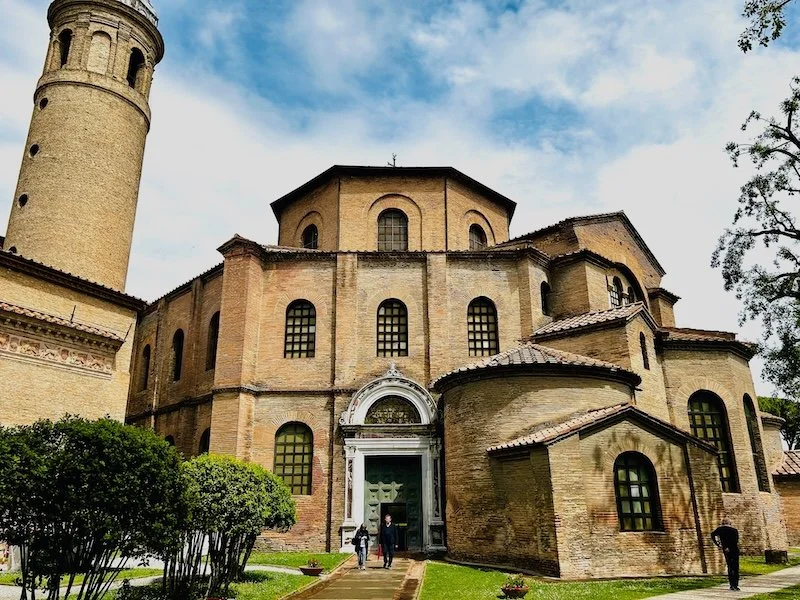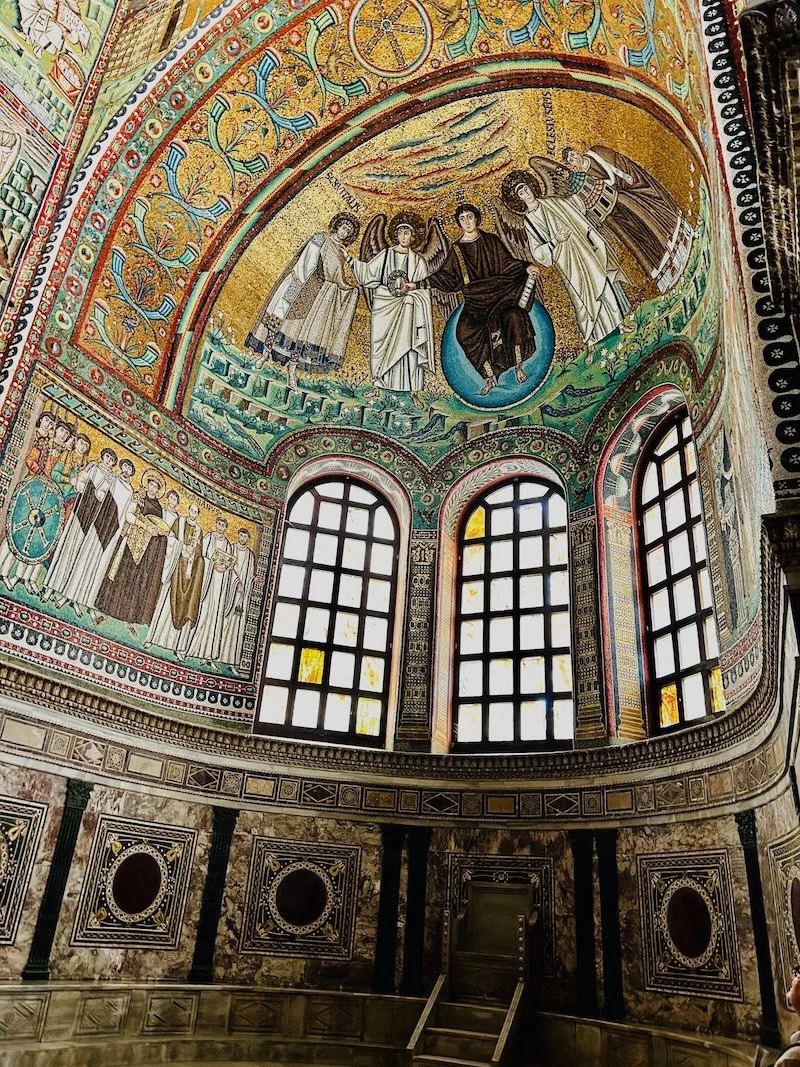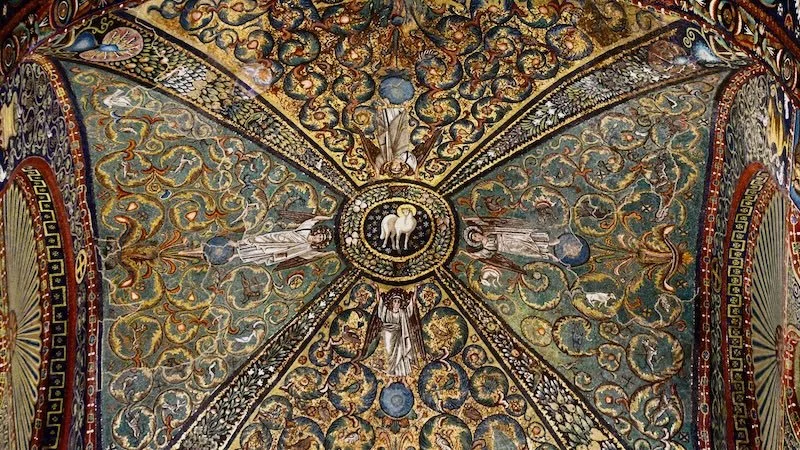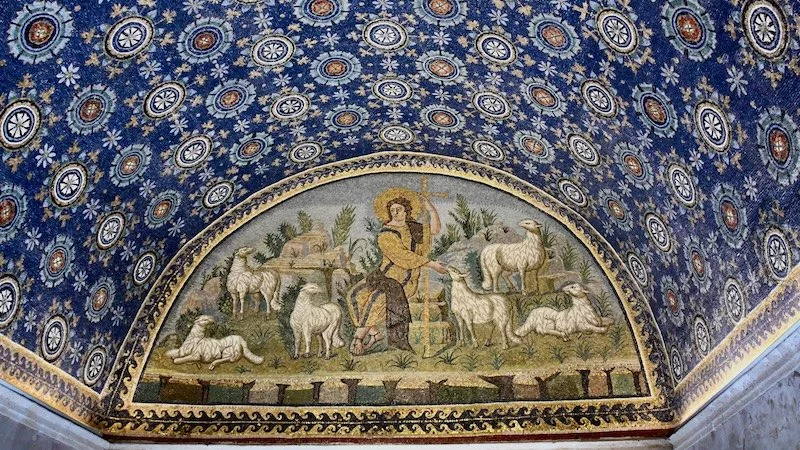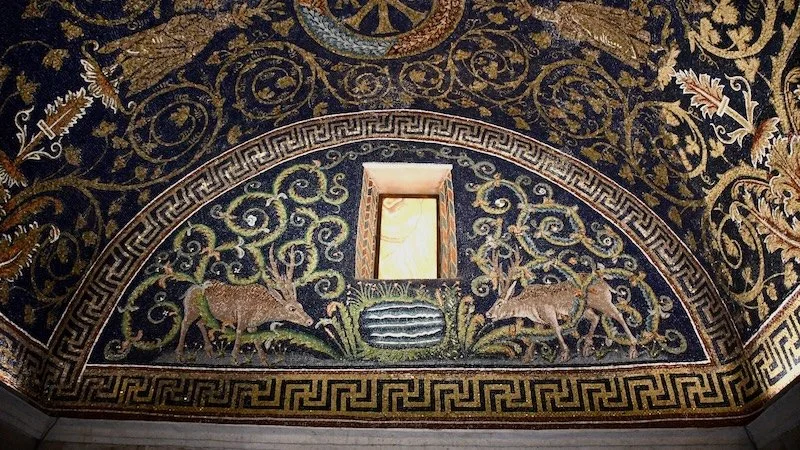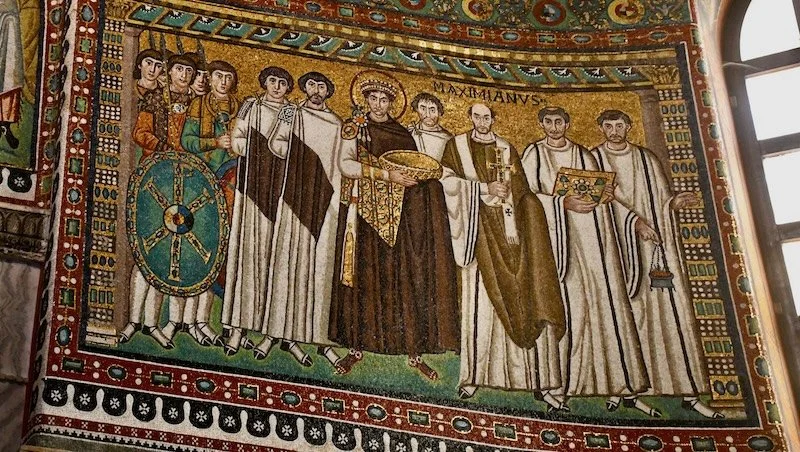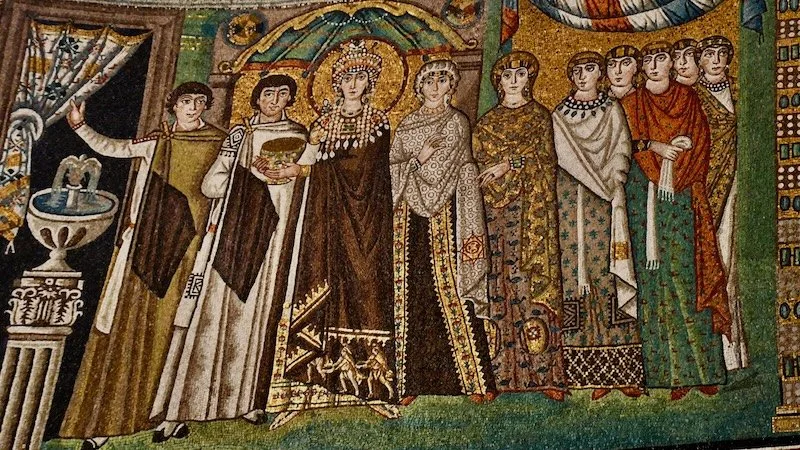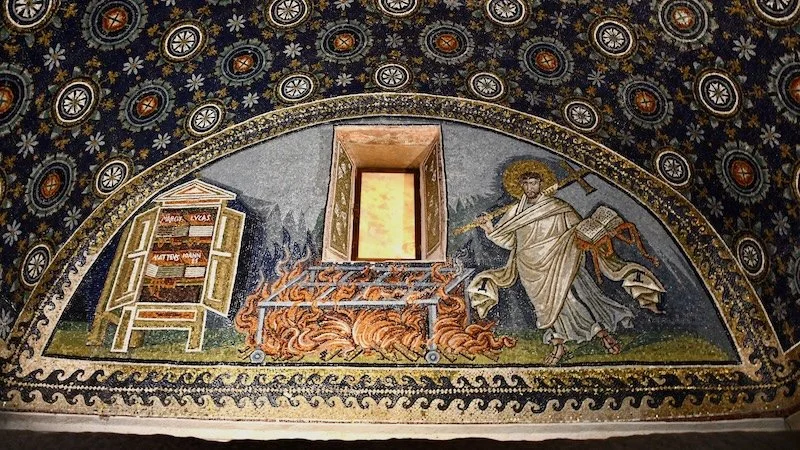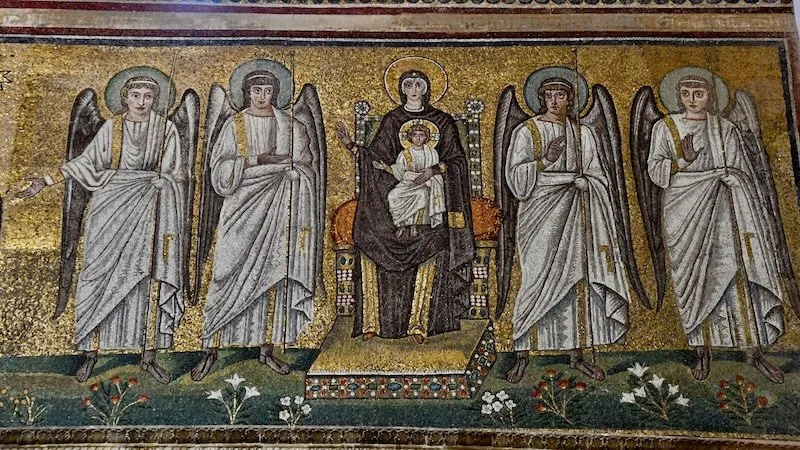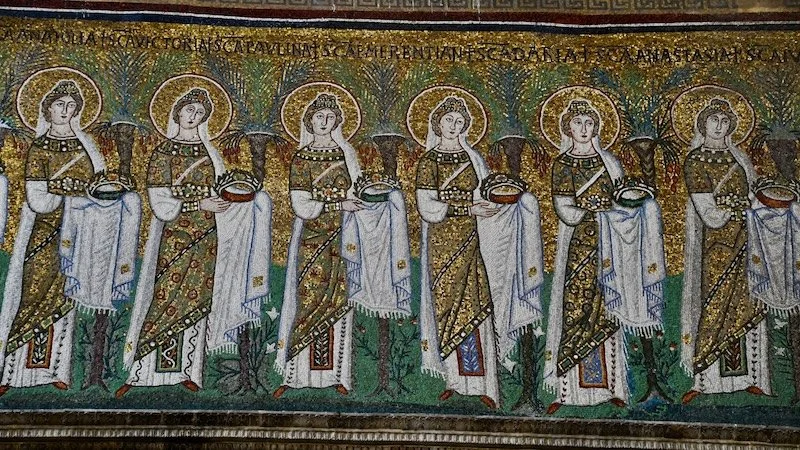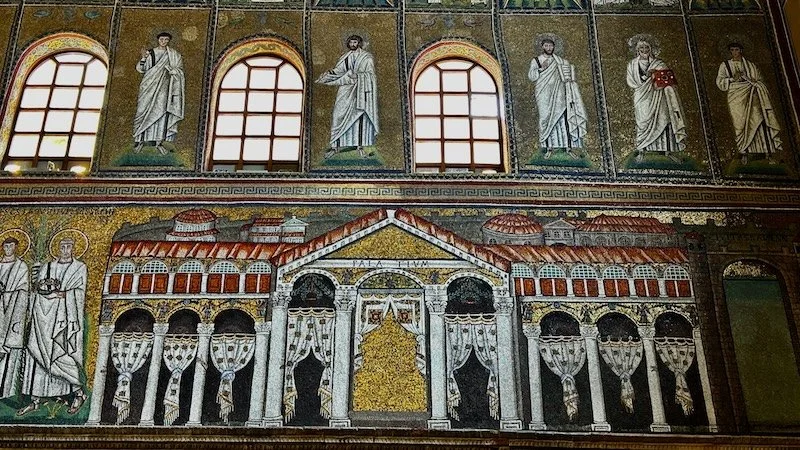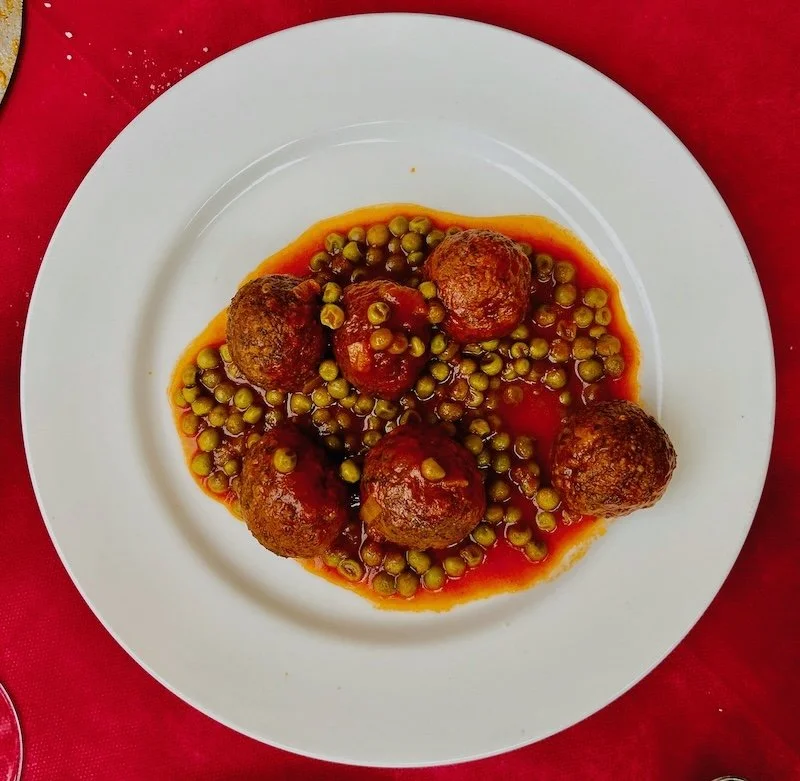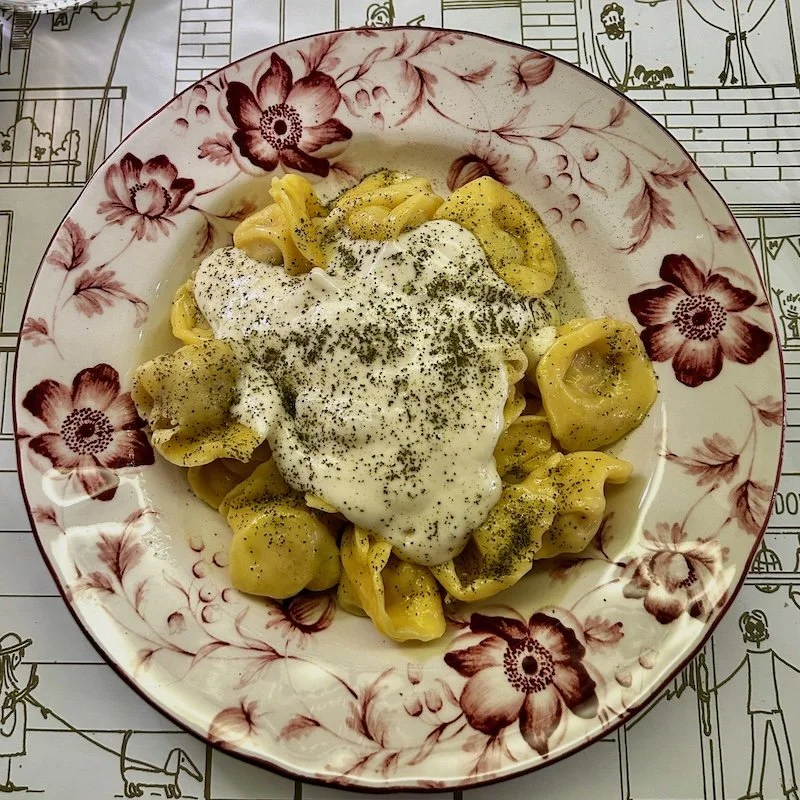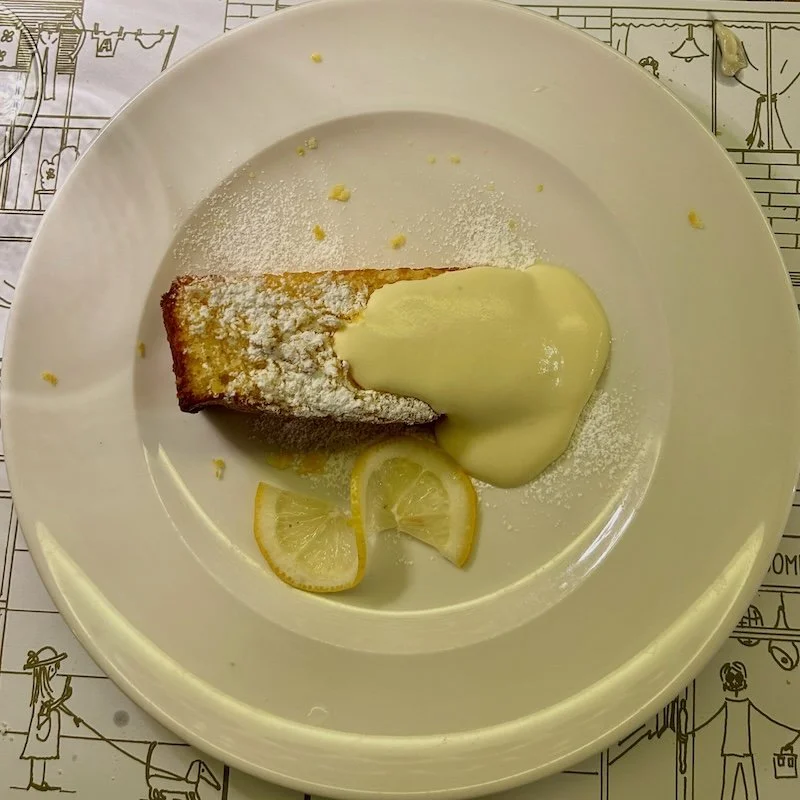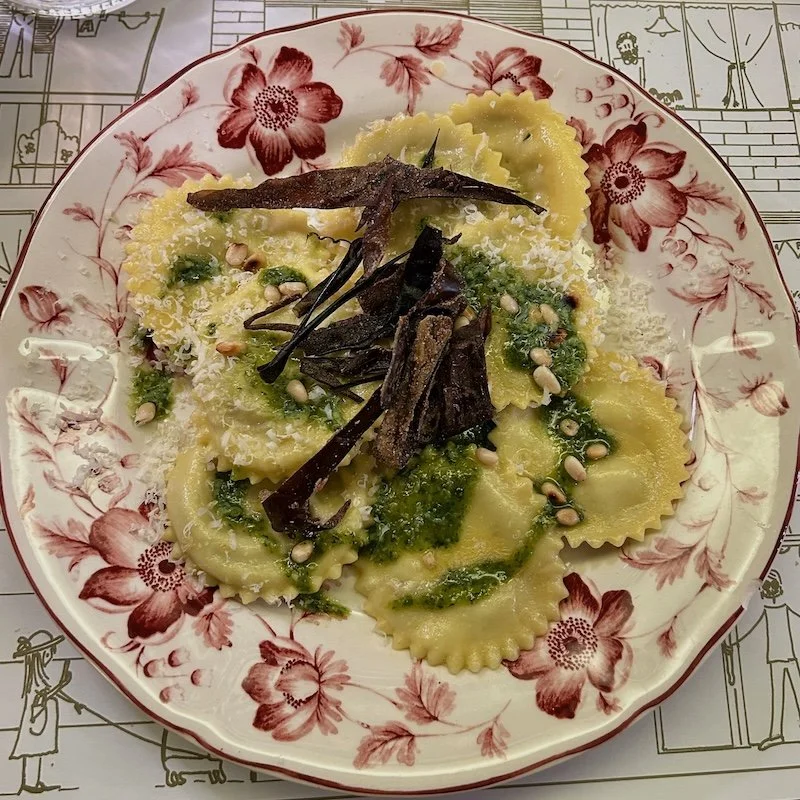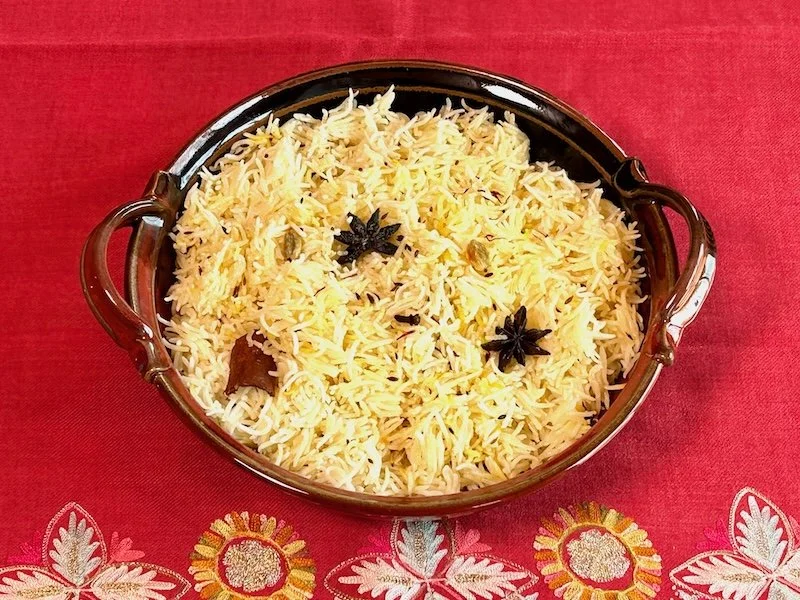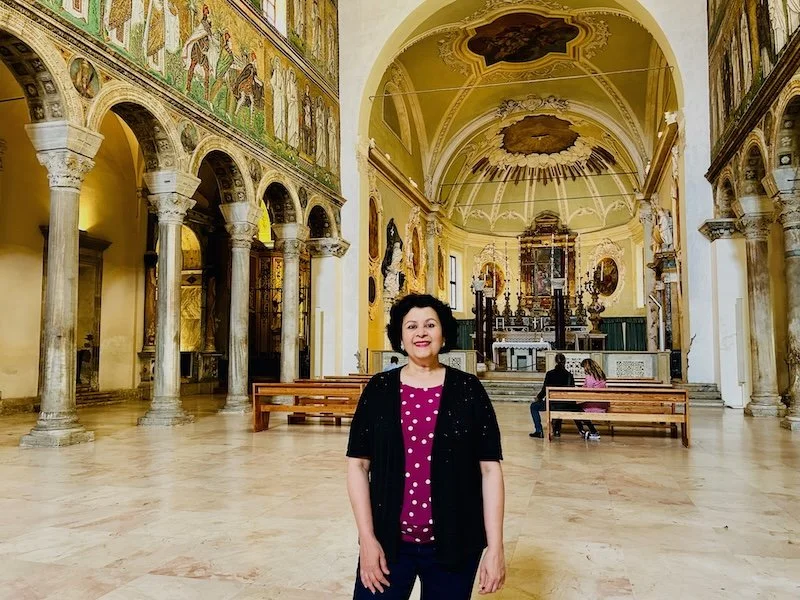Saffron Rice In Ravenna, Italy
Visiting Ravenna was a long held dream for us. It is a city near the Adriatic coast of Italy that is famous for its 5th and 6th century monuments, eight of which have been declared to be world heritage sites. These ancient churches are remarkably well preserved and renowned for their stunning mosaic art, which offers a unique glimpse into the world of early Christianity.
When we walked into the Basilica of San Vitale the interior appeared ablaze with light. The walls and ceiling of the church are covered with millions of tiny pieces of glass in which are encased gold foil or coloured pigments, carefully set into the walls to create mosaics of awe-inspiring beauty. The colours look as bright as they must have been on the day that they were made, some fifteen centuries ago.
On one side of the altar we saw a portrait of the sixth century Emperor Justinian, ruler of the Byzantine empire with its capital in Constantinople. Ravenna remained part of Byzantium even as the rest of the western Roman Empire collapsed, overrun by Germanic tribes sweeping down from the north. The portrait of Justinian, surrounded by churchmen and soldiers, symbolizes the protection he offered the city from the chaos engulfing the rest of Italy.
On the other side of the altar was a mosaic of the Empress Theodora, wife of Justinian, appearing equally regal. The Byzantine empire reached its zenith during their reign, with a great flowering of art and architecture. They built many magnificent churches besides San Vitale, including the greatest of all, the Hagia Sophia in Constantinople. The Basilica of Sant'Apollinare Nuovo, built in Ravenna at about the same time as San Vitale, is another glorious building with its interior completely covered with mosaics depicting biblical stories.
Ravenna’s great churches were being built even as Roman civilization crumbled elsewhere in Europe. The Byzantine Empire prospered by trading with its eastern neighbours, which included the great empires of Persia, India and China. Luxury goods such as silk and spices were widely available in Constantinople and Ravenna long after they had disappeared from the rest of Europe following the collapse of the old Roman Empire. Spices such as saffron, which had been a staple of ancient Roman cooking, practically disappeared in western Europe though they were still used by the Byzantines.
Arabs came to rule Sicily in the 9th century and began to grow rice, originally from India, and saffron, widely used across the Middle East, on the island. In subsequent centuries both these ingredients became widely available across Italy and rice became part of Italian cuisine. Risotto alla Milanese is an example of a dish that combines saffron and rice and is a testament to Italy’s ancient links to the east. Cooking rice with saffron and butter is also an age old practice in India and Persia, showing how these three classic ingredients have universal appeal.
We saw saffron risotto on many restaurant menus in Ravenna, a city with so many wonderful casual little restaurants that you are bound to eat well no matter where you go. Starting with the popular La Piadina del Melarancio, where we grabbed a quick bite of stuffed grilled flatbreads to the highly recommended Osteria dei Battibecchi, where we feasted on exquisite local fare such as meatballs with fresh peas in a flavourful tomato sauce, decadent roasted potatoes and the lasagna of our dreams, to handmade stuffed pastas, stuffed zucchini flowers and homemade desserts at Cucina del Condominio, we were stuffing ourselves with good food at every meal!
Aromatic, buttery saffron rice goes well with curries, dals and grilled kababs. Pair it with any Recipe of your choice from my website. Leftovers are great and can be reheated easily in the microwave.
Note: As a general rule, don’t double the amount of water per cup of rice. Since the rice absorbs some water while soaking, you can cut down the water by 1/4 cup. So, for 1 cup of rice, add just 1 3/4 cups of water, not 2 cups.
Saffron Rice
1 1/2 cups Basmati rice
3 tbsp ghee or butter
4 each, whole spices: cardamom, cloves
2 star anise
1 inch stick cinnamon
1/2 tsp cumin seeds
Salt to taste
1/4 tsp saffron strands
2 3/4 cups water
Place rice in a large bowl and rinse under running water three times.
Cover rice with water and let soak for 10 min.
Drain rice in a sieve and leave it in sieve till needed.
Melt ghee or butter in deep, heavy bottomed saucepan set over medium heat.
Add cardamom, cloves, star anise, cinnamon stick and cumin seeds. Let them splutter and fry for a few seconds.
Add drained rice and gently turn it around in the spiced ghee or butter for about 30 seconds.
Add water and stir to mix, then add salt and saffron. Stir to mix.
Bring to a gentle boil, then cover, reduce heat to very low and cook for about 14 minutes until rice is done. Let rice sit in covered saucepan for another 5 min to absorb all the water.
Fluff up rice gently with a fork or transfer it to a serving platter and serve.
Note: You can remove the whole spices from the rice before serving, if desired.
Serves Four
